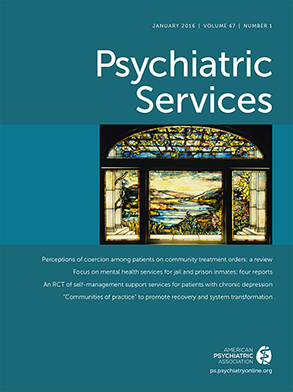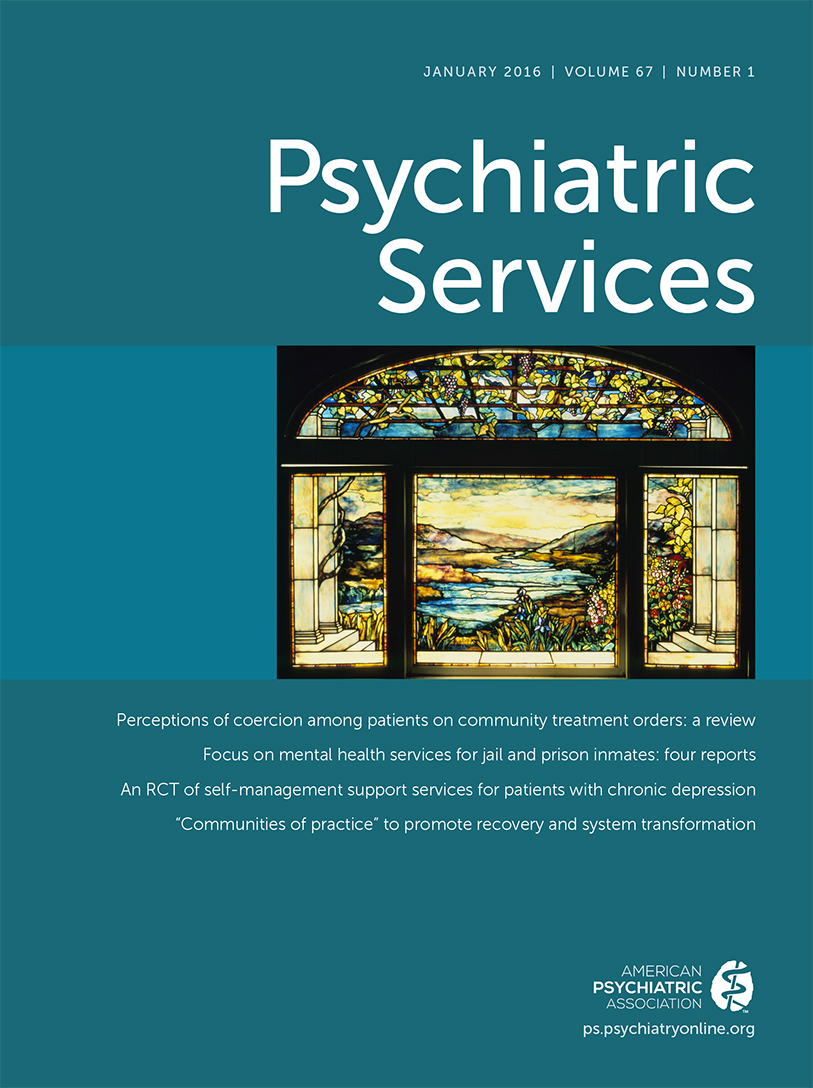In recent decades, increasing attention has been paid to developing and sustaining a well-trained and competent workforce for the treatment and support of people with severe mental illness in the community (
1–
3). In the United States, the Annapolis Coalition is such an initiative (
4). Similar efforts have been described in the United Kingdom (
5). There is a need for a wide range of competencies. Clinical guidelines emphasize evidence-based treatments, and the competencies and skills required to implement them. Reviews show a high degree of consensus on core competencies for training (
6,
7).
Challenges in Community Mental Health Services in Norway
In Norway, community mental health centers (CMHCs) and primary care providers have responsibility for different parts of community treatment and care of people with severe mental illness. The municipalities are responsible for primary care, including care provided by general practitioners (GPs), and for social and other health services. These include basic services, such as housing and financial assistance, as well as services delivered by primary care mental health teams. CMHCs have outpatient clinics, psychosis and rehabilitation teams, and almost half of the country’s psychiatric beds (
8). CMHCs and psychiatric hospital departments run by 19 health authorities are the main components of public mental health and substance abuse services for adults (
9,
10). The split in organization and financing between specialized mental health services and primary care often leads to a lack of understanding of needs and a lack of coordinated services, especially for persons with severe mental illness, who are typically in need of a wide range of long-term comprehensive services. This is the background for the training program described in this column.
The National Multidisciplinary Training Program
In the mid-1990s, the Centre for Psychotherapy and Psychosocial Rehabilitation of Psychoses (SEPREP), in collaboration with a CMHC, developed an innovative model for local multidisciplinary onsite training programs addressing the needs for more comprehensive and coordinated services for people with severe mental illness. SEPREP is a national network of mental health workers, service users, caregivers, and others providing or supporting psychosocial treatment and rehabilitation for people with severe mental illness. In 1998, the Norwegian Directorate of Health and Social Affairs commissioned SEPREP to organize a nationwide dissemination of the training program, which had proved successful in two sites. To ensure nationwide dissemination, direct expenses for local training programs were financed by the ten-year national Plan for Mental Health 1999–2008. The financing was later extended beyond the dates covered by the ten-year national plan.
The goals of the training program are to improve the competence of individual mental health workers, to promote multidisciplinary collaboration across professional groups and service levels, and to increase the influence of service users and caregivers on treatment and services. The individual training goals are defined as follows: understanding of psychosis and treatment, skills in building and maintaining relationships with service users, awareness of interactions with service users to better understand their experiences and needs, multidisciplinary teamwork within and across service levels, increased support of caregivers, and ability to take care of oneself while performing clinical work. From 2004, the training program included co-occurring substance use as an important focus in addition to severe mental illness. Since 2011, a local program version for early detection and prevention of severe mental illness among young people has been pioneered in a few sites. Personnel from schools and child care workers are included as students in these training programs.
The two-year training consists of lectures one day a month (80 hours), supervision in small multidisciplinary groups every two weeks (80 hours), discussion of theory in small groups once a month (40 hours), and writing two clinical cases that integrate theory and literature (group task). Lecturers include service users and caregivers. The supervisors are clinicians with extensive experience in the treatment of people with severe mental illness and in the provision of clinical supervision. Participation in the training is a part-time activity while students continue in their clinical jobs, facilitating interactions between training and practice. Each supervision group consists of health care workers from CMHCs and from primary care settings. By training the workforce together, the program also aims to improve communication and collaboration between services. Thus the program offers a combination of individual training and system-level intervention.
Collaboration and Partnership for Local Implementation
Planning and implementation of a local program is done through collaboration between a CMHC, the municipalities in its catchment area, and a regional SEPREP coordinator. A program usually has 25–40 participants, and at least one-third of participants are primary care providers in the municipalities. A local steering group monitors program implementation. The group includes representatives from participating services, service user and caregiver organizations, and SEPREP, as well as students. Child and adolescent mental health outpatient clinics are involved in the local programs for early detection and prevention of severe mental problems among young people.
Dissemination and Evaluation
Nationwide dissemination has occurred through the extension of support for local training programs in each of the four health regions in Norway. In the 15 years since the program’s start in 1999, more than 100 local training programs have been organized, with more than 3,500 participants and equal participation from primary care and specialized mental health services. Two-thirds of the 75 areas served by CMHCs in Norway have had one or more local training programs.
The national training program has been subject to three external evaluations. The evaluations examined data from questionnaires and interviews with organizers of the national and local training programs and from participants and leaders of the health services involved in the local programs. An evaluation commissioned by the Norwegian Directorate of Health and Social Affairs included questionnaires from 415 participants and 215 employers or leaders of services, and interviews with 31 persons in various roles (
11). The training program was found to be successful in several areas: recruitment, satisfaction among participants and service managers, strengthened clinical competence, increased understanding and mutual respect between professional groups and service levels, and increased focus on user involvement and influence. Impact on practical collaboration seemed to be more moderate and to be dependent on leaders.
A report commissioned by the Norwegian Research Council found many similarities between mental health workers’ educations in university colleges and the SEPREP training program but concluded that the SEPREP program was more focused on severe mental disorders and placed more emphasis on clinical practice (
12). An evaluation of the local program version for young persons has been conducted by a university college with questionnaires and qualitative focus group interviews with students and leaders (
13). This evaluation found that the training was successful according to both the students and the leaders of the services.
The national training program was a part of the national Plan for Mental Health 1999–2008, which had some of the same goals as suggested in a national action plan for workforce development in the United States (
14). The Norwegian training program incorporates several recommended training approaches and best practices (
15), including having service users and caregivers serve as teachers (
16). The program has a strong emphasis on service user and caregiver perspectives, clinical supervision, relationship building, and better collaboration across services.
Conclusions
The Norwegian workforce training program has pioneered a model that we have not found elsewhere: joint training of mental health frontline workers from collaborating services to achieve changes at the level of the individual mental health worker and at the systemic health services level. Participants have found the model useful both for increasing individual competencies of the frontline workforce that provides treatments and services to people with severe mental illness and for increasing collaboration between primary care and specialized mental health services. After 15 years, the CMHCs and municipalities continue to give priority to these local onsite multidisciplinary training programs for their workforce.

